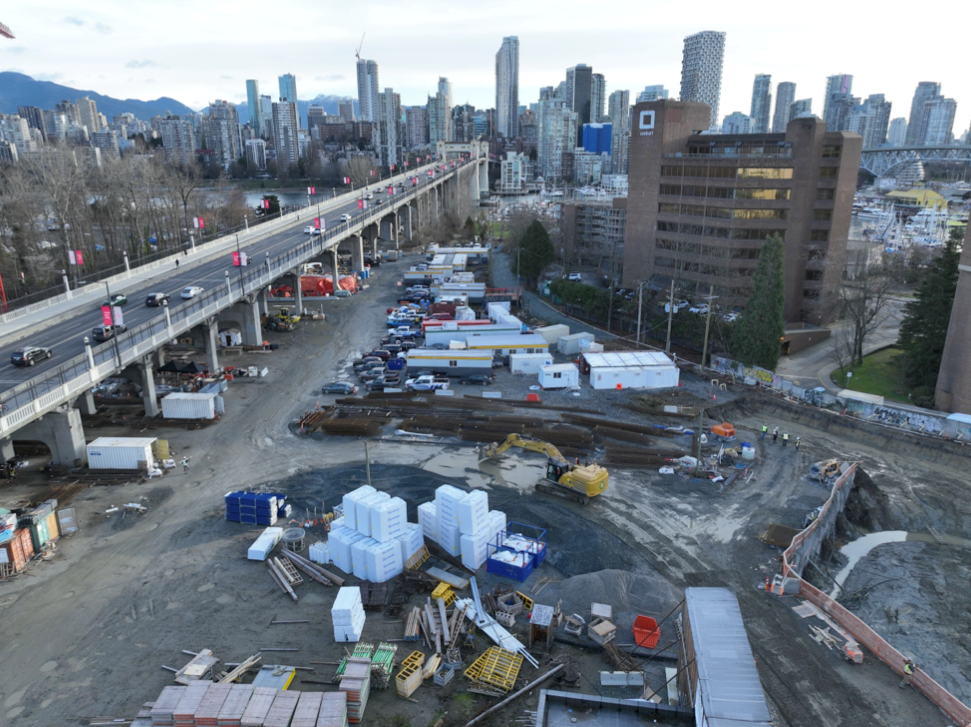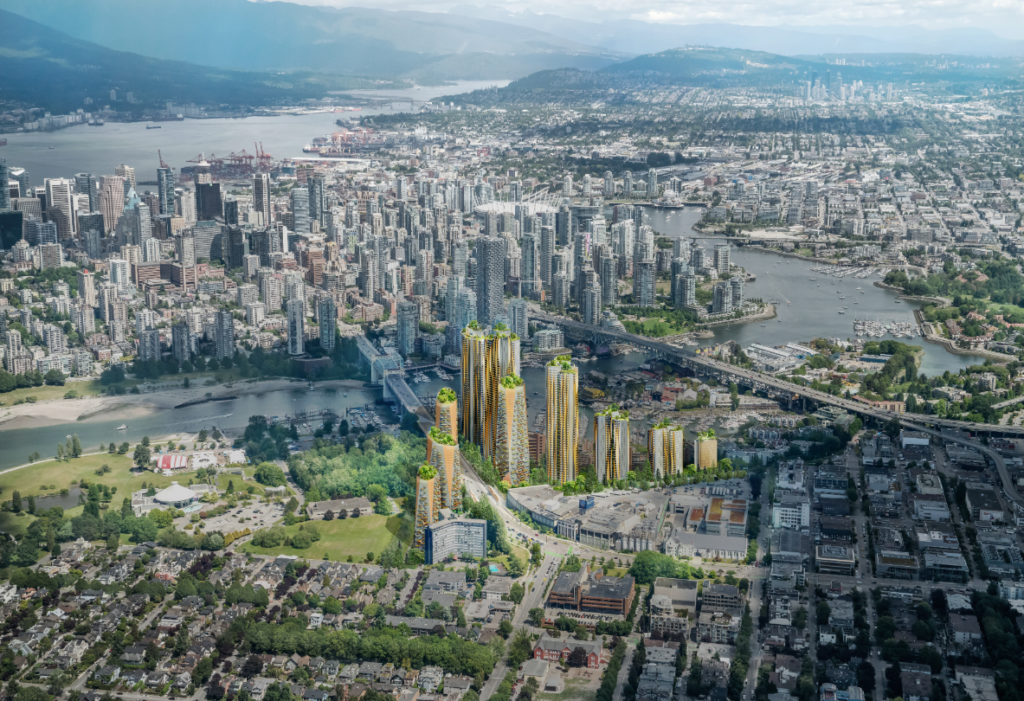- Canada's First Nations are breaking ground on historic housing and community development projects.
- The country's most significant developments are happening in Vancouver, its most expensive city.
- These indigenous "city-building" projects are some of the biggest globally and could be a model for the US.
Much like in the US, Canada is experiencing a severe housing affordability crisis, and the country's indigenous communities, known as First Nations, have long suffered disproportionately from inadequate housing.
But Canada's indigenous communities are fighting to address the issue. In Vancouver alone, several First Nations are leading a major push to build housing on indigenous-owned land, in some cases partnering with the federal government to build entirely new communities that will house tens of thousands of people, while generating wealth for generations of First Nations members to come.
Ground has already been broken on one of these projects, 11 towers with 6,000 homes being built by the Squamish Nation on a 12-acre piece of land near downtown Vancouver, Canada's most expensive real-estate market. The Squamish people were forced off of this land in the early 20th century and finally won back their ancestral territory about 20 years ago.
Because the development, named Sen̓áḵw, is on Squamish Nation reserve land, it's not subject to the same governmental land-use regulations as land elsewhere in the city, allowing for a speedier approval and construction process. The first three towers are set to be completed in November 2025, and the rest of the development is scheduled to be done in about eight years.
Mindy Wight, CEO of the Squamish development group building Sen̓áḵw, called it "the creation of a modern Squamish village" in an interview with Business Insider.
Wight sees Sen̓áḵw and other indigenous developments as particularly innovative ways to solve the region's housing crisis.
"While the Nation benefits from generating wealth and prosperity for its members, it's actually solving some of those challenges that are facing Vancouver," Wight said.
She noted that about 20% of the units will be designated as affordable housing, and 250 units will be reserved for Nation members.
The new housing is much needed for Vancouverites, especially First Nation members. Canada's federal auditor general recently condemned a "distressing and persistent pattern of failure" by federal programs designed to support First Nations housing and infrastructure, among other services. She said she was "completely discouraged" by the number of First Nations families forced to live in unsafe or inadequate housing.

In a separate effort, three First Nations — the Musqueam, Squamish, and Tsleil-Waututh peoples — came together to create a partnership to develop six different pieces of land in Vancouver and the surrounding area. The value of the land alone, which has been acquired by the Nations over the last decade, now exceeds $4 billion, according to Brennan Cook, vice president of the MST Development Corporation, the real estate company representing the three First Nations.
"What they're doing here is groundbreaking, it really hasn't been done elsewhere," Cook said.
In two major projects in Vancouver, the MST Development Corporation joined with the Canadian federal government to buy two large pieces of land in the city that will be developed into entirely new communities, with schools, libraries, daycares, public space, and thousands of units of housing.
One 90-acre planned development, called Jericho Lands, will house up to 18,000 people — more than doubling the area's current population. The project is moving along — the Vancouver City Council unanimously approved its policy statement in January, greenlighting the creation of more finalized plans. The other development, Heather Street Lands, a 21-acre site in central Vancouver, will have about 2,600 homes.
The Nations want the developments to be an investment that reaps returns over time, so it will offer 99-year leases to homeowners, rather than selling off any of its property.
"The idea is to create a legacy economic engine for the Nations to provide for their community members, whether that be the preservation and retention of culture, art, language, healthcare, any other kind of employment training procurement opportunities," Cook said.
Elisa Campbell, a vice president at the Canada Lands Company, the arm of the federal government partnering with the three First Nations, called the Jericho and Heather Street Lands projects "transformational" and "globally exceptional."
"These are not just properties, these are communities that are in the broader context of a city," Campbell told Business Insider. "These are city-building moments."
But the pre-construction approval process has been slow because the land isn't First Nations reserve land, and is subject to all of the government's land-use regulations. Heather Lands has been underway for a decade already and the project still isn't done with the municipal approvals process. Jericho Lands is expected to take between 20 and 30 years to complete.
The housing projects aren't the only major developments underway on indigenous land in Canada. Just off the coast of Vancouver, the Malahat First Nation is building a 100,000-square-foot battery plant in partnership with the company Energy Plug Technologies on the Nation's land. The factory will create in-demand lithium-iron-phosphate battery storage and create about 100 new jobs.
NIMBY pushback
Of course, the housing developments have faced pushback from some community members. Sen̓áḵw survived a legal challenge last fall when a British Columbia Supreme Court judge rejected a claim that the local community wasn't sufficiently engaged in the planning process.
Some of the development's critics have attempted to weaponize Native American philosophy against it. In one case, former Vancouver city councilor Gordon Price argued that the First Nations cannot call themselves "land defenders" when they're building concrete high rises. "There's a big gap between that and an indigenous way of building," Price, who is not a member of the First Nations, told CBC Vancouver last year.
Supporters reject Price's argument, noting that building housing and sustainable communities are both in the best interests of the First Nations and the broader city. Bates College environmental studies professor Tyler Harper has called this tendency for non-indigenous Canadians and Americans to stereotype indigenous communities as conservationists "sentimental racism."
"Indigenous people are reduced to vehicles for timeless, pre-historical knowledge – wish fulfillment for white progressives dreaming of a prelapsarian age before capital and industry," he wrote recently on X.
"Canadians aren't used to seeing Indigenous people occupy places that are socially, economically or geographically valuable, like Sen̓áḵw," indigenous writer Michelle Cyca wrote recently in MacLean's. "It's remarkable because it's a restoration of our authority and presence in the heart of a Canadian city."

Could this kind of development happen in the US?
There are no housing or infrastructure developments on US tribal land that match the scale of the First Nations projects in Canada. While some Native American tribes have spearheaded significant housing projects, most indigenous-owned land in the US isn't in the most valuable housing markets. Other economic development efforts in the US have been largely focused on the gaming industry, including casinos.
"The big picture problem is that the legacy of Indian removal is that it forced so many tribes onto marginal land that they are excluded from some of the highest value areas of the country," Alex Armlovich, a senior housing-policy analyst at the Niskanen Center, told Business Insider.
Pro-housing and development advocates like Armlovich are "open-mouthed in awe of just what an incredible thing they're working on in Vancouver," Armlovich added.
Pro-housing advocates say economic development projects on Indian land are possible if local and state governments take action to restore ancestral land in cities to tribes that are interested in development, or otherwise work with Native American tribes to invest in industrial development.
"At a time when NIMBYism and permitting hangups are threatening America's push for green industrial policy, a win-win alliance with Native American tribes could be exactly what this nation needs," economist Noah Smith, wrote recently. "Instead of demanding Native Americans be guardians of a pastoral past, we could enlist their aid in leading us into a green technological future."
Housing developments are particularly attractive at a time when so many parts of the country are facing a shortage of homes and, as a result, skyrocketing housing costs.
"If a city wanted to get serious about land acknowledgments, and facilitate development, and house a tribe on its historic lands, that would be pretty incredible to do it in a way that's positive for everybody," Armlovich said.

